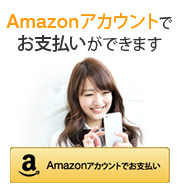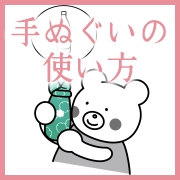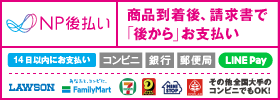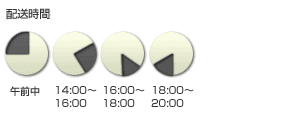手ぬぐいの使い方 その十二 「ネッククーラー」 <12. Cold neck scarf>
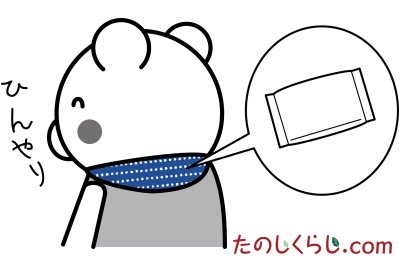
手ぬぐいは歴史を遡ると、奈良~平安時代には使われていたと云われています。当時は布が貴重だったため身分の高い者しか手にできませんでしたが、鎌倉時代以降から庶民にも少しずつ普及し、日本国内で綿花栽培が発展した江戸時代から、木綿の織物とともに生活用品として庶民に欠かせない物になりました。
当時は、ガーゼや包帯などの役割から、現代のタオルや台拭や雑巾やハンカチなどの役割も担い、そのほかには縁起物としての贈答品や配り物としても使われ、本来の汗や水の吸水の目的だけでなく様々な用途の広がりをみせていきました。
ここでは、「手ぬぐいの使い方」として、現代での使い方をイラスト入りでご紹介していきます。
その十二は "ネッククーラー" です!
保冷剤を手ぬぐいで包んで首に巻くとネッククーラーに早変わり。ハチマキのように頭に巻いて、熱冷ましとしても使えます。
手軽でエコな手ぬぐいの "ネッククーラー" で、暑い夏を快適に過ごしましょう(^^)
当時は、ガーゼや包帯などの役割から、現代のタオルや台拭や雑巾やハンカチなどの役割も担い、そのほかには縁起物としての贈答品や配り物としても使われ、本来の汗や水の吸水の目的だけでなく様々な用途の広がりをみせていきました。
ここでは、「手ぬぐいの使い方」として、現代での使い方をイラスト入りでご紹介していきます。
その十二は "ネッククーラー" です!
保冷剤を手ぬぐいで包んで首に巻くとネッククーラーに早変わり。ハチマキのように頭に巻いて、熱冷ましとしても使えます。
手軽でエコな手ぬぐいの "ネッククーラー" で、暑い夏を快適に過ごしましょう(^^)
In Japanese history, the tenugui (Japanese towel) was originally used approximately between 700s and 1100s A.D. (Nara & Heian era in Japan). At that time, the tenugui was only available for people of high social status, because cloth was a valuable item. After the late 1100s (during the Kamakura era), the tenugui gradually became available to commoners. In the 1600s, when cotton farming developed, the tenugui, as well as cotton fabric, became a common item for people in Japan.
Since then, tenugui usage has expanded from as a simple towel to absorb liquid to as a gauze bandage and a gift and giveaway item.
Below are some examples of how to use the tenugui during modern times (with illustrations):
<12. Cold neck scarf>
A small ice pack wrapped in a tenugui makes an easy cold neck scarf which is very useful on a very hot day. It could be used to keep one’s forehead cool when you have a fever by wrapping it around the head.


